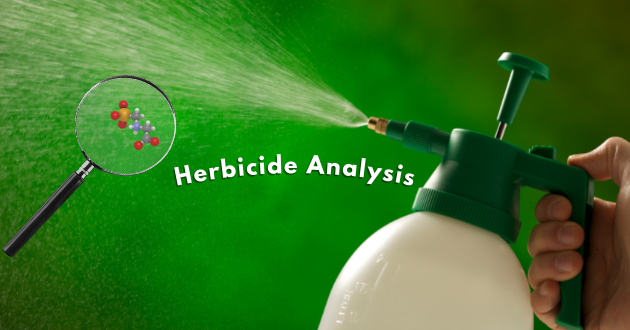20
May
New Commercial Pesticide Toxicity Analysis Highlights Need to Shift to Organic Products

(Beyond Pesticides, May 20, 2021) Beyond Pesticides and Friends of the Earth (FOE) collaborated to analyze herbicide products at two of the most popular home and garden retailers, Home Depot and Lowe’s. This new Commercial Herbicide Analysis highlights the adverse health and environmental effects of widely available toxic pesticides while encouraging retailers to expand on—and consumers to use—safer, least/non-toxic pesticide products.
According to Akayla Bracey, Beyond Pesticides’ science and regulatory manager and lead researcher on the review, said, “People generally aren’t aware that the pesticides widely available in garden retailers like Home Depot and Lowe’s are a threat to health and the environment, and that there are safer products that are available and used in organic land management.”
“Many herbicides that are widely available at home and garden stores are associated with a range of toxic impacts on human health and the environment, including harm to bees and other pollinators. To meet growing consumer demand for safer and more environmentally friendly products, home and garden stores must commit to phase out the most toxic products from their shelves and to increase the number of organic and safer alternatives that they offer,” says FOE senior staff scientist Kendra Klein, Ph.D.
Friends of the Earth composed a comprehensive list of products sold by Home Depot and Lowe’s by browsing online and local stores. Furthermore, the organization allowed each retailer to review and edit the list. Beyond Pesticides evaluated active ingredients in all products and performed a toxicity analysis using available epidemiological and laboratory and studies.
The analysis, conducted by Beyond Pesticides, reveals that approximately half of all Home Depot herbicide products (24 of 51) and Lowe’s herbicide products (23 of 40) contain ingredients considered Highly Hazardous Pesticides (HPPs). The United Nations Food and Agriculture Organization (FOA) classifies HHPs as “pesticides linked with a high incidence of severe or irreversible adverse effects on human health or the environment.” The following active ingredients pose the most harm to human, animal, and ecosystem health, including cancer, reproductive harm, neurotoxicity, and hormone (endocrine) disruption: glyphosate, 2,4-D, dicamba, mecoprop, and pendimethalin. Of these five chemicals, all but dicamba are classifiable as HHPs. Only 29 percent of Home Depot (15 of 51) and 17 percent of Lowe’s (7 of 40) herbicide products qualify as least toxic or organic.
Many individuals are unaware of what chemicals are in the products they use, let alone their chemical effects. Conventional commercially available herbicides contain chemicals where studies find exposure can cause preventable diseases. Some of these diseases include asthma, learning disabilities, birth and reproductive abnormalities, endocrine and immune system disorders, brain and nervous system disorders, and several types of cancer. “Pesticide exposure can promote the development of various diseases, many of which are co-occurring…These links to diseases support an urgent need to shift to toxic‐free practices and policies,” Warren Porter, Ph.D., Beyond Pesticides board member and professor emeritus of zoology and environmental toxicology at the University of Wisconsin-Madison.
Moreover, pesticide resistance among plants and insects is increasing along with genetic engineering of pesticide-tolerant crops. These instances have implications for rising levels of pesticide applications to eliminate pests. However, the solution is not to spray more toxic chemicals. We must educate consumers and encourage companies to protect people and pollinators by rejecting toxic products and expanding safer options.
To view the analysis visit, https://www.beyondpesticides.org/resources/pesticide-gateway/commercial-herbicide-analysis
See Beyond Pesticides Lawns and Landscapes webpage and Products Compatible with Organic Landscape Management.
Help Beyond Pesticides educate and build the movement that will bring long-needed protection to humans, animals, and the entire environment by attending the National Pesticide Forum this spring. Cultivating Healthy Communities will bring together expert scientists, farmers, policymakers, and activists to discuss strategies to eliminate harms from toxic chemical use in favor of nontoxic organic solutions. It begins with a pre-conference session on Monday, May 24, and continues every Tuesday beginning May 25, June 1, June 8, and ending June 15, 2021. Registration is open today and available through the webpage on this link. It starts with US.
All unattributed positions and opinions in this piece are those of Beyond Pesticides.
Source: Beyond Pesticides











We have our utilities through our alleys and once a year Entergy hires a contractor to spray herbicide to keep the growth down. I complained to the State Plant Board and they said their investigation showed no overspray. The City of Little Rock Needs an ordinance to stop this practice but I need help in how to propose it, frame it and present it. Last year not only did the kill much on private property killing landscape but also pets, gardens, etc but the 23 miles of alleyways sprayed did contaminate the air water and soil. Their main ingredient is glyphosate. If you can help please do
May 21st, 2021 at 11:08 am